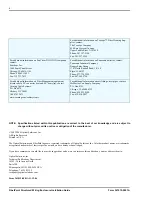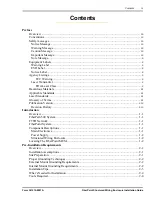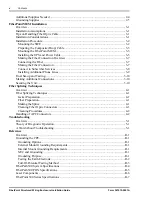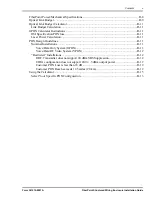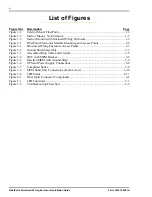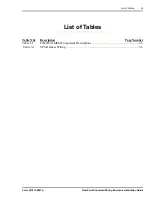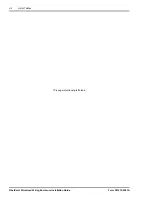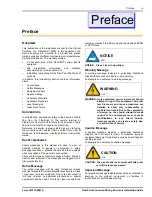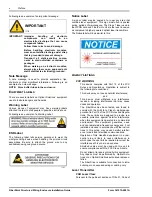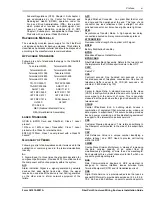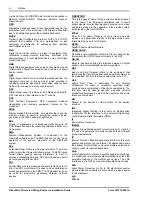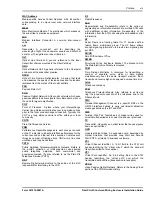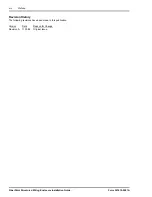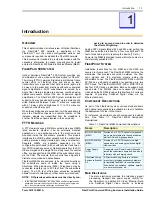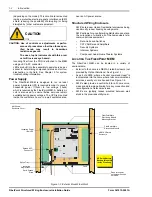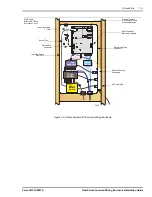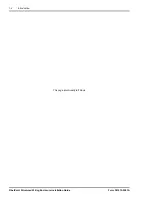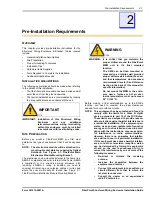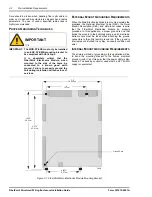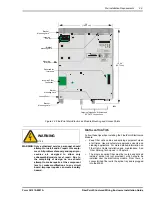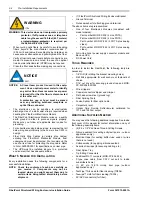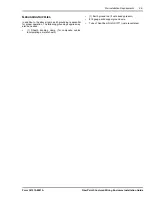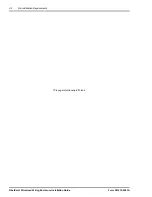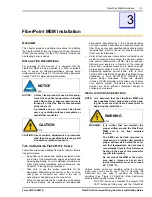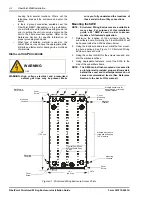
Preface
xi
Form 361015-0001A
FiberPoint Structured Wiring Enclosure Installation Guide
Federal Regulations (CFR), Chapter I, Subchapter J,
and administered by the Center for Devices and
Radiological Health (CDRH), operation under the
Food and Drug Administration (FDA), this product,
which produces or receives an optical signal, com-
posed of Laser Radiation, complies with 21 CRF
Chapter I, Subchapter J, as applicable to Class I Laser
Products with an internal Class 3A Hazard.
H
AZARDOUS
M
ATERIALS
The externally mounted power supply for the FiberPoint
unit includes a battery for back-up purposes. This battery is
classified as hazardous material and should be disposed of
according to the manufacturers recommendations.
A
PPLICABLE
S
TANDARDS
Following is a list of standards that apply to the FiberPath
500 System.
Telcordia GR-303
Telcordia GR-909
Telcordia GR-63
Telcordia GR-950
Telcordia GR-1089
Telcordia GR-49
Telcordia GR-2890
Telcordia GR-499
Telcordia GR-1244
ITU G983.1
TR-TSY-000077
TR-TSY-000083
TA-NWT-000406
ANSI T1.231
ANSI T1.403
ANSI T1.410
IETF RFC 2495
IETF RFC 1757
IETF RFC 2131
IETF RFC 951
IETF RFC 1514
FSAN (Issue 3)
UL1950
UL1697
FCC Part 15
NEC (National Electrical Code)
REA (Rural Electric Association)
L
ASER
S
TANDARDS
GPON & BPON Card and FiberPoint: Class 1 Laser
product.
1310nm or 1490nm Laser Transmitter: Class 1 Laser
product with a Class 3a internal hazard.
EDFA @ 1550nm: Class 1 Laser product with a Class 3b
hazard.
G
LOSSARY
OF
T
ERMS
Following is a list of abbreviations and/or terms used in this
publication or commonly used in the telecommunications
industry.
3
σ
3 Sigma. Equal to three times the standard deviation for
component performance. Provides 99.73% confidence that
the component will function properly within the system.
AIS
Alarm Indication Signal is a signal generated by network
devices that pass digital trunk data. When the signal
received on one side of the device is lost, AIS is generated
on the other side to inform network equipment of the
failure.
APC
Angled Polished Connector. An optical fiber that is cut at
an angle and then polished at the end. This type of end
connector has less reflectance than a straight cut ultra
polished connector, but it also has slightly more light loss.
ATM
Asynchronous Transfer Mode. A high speed, low delay,
connection-oriented cell relay communications protocol.
ATTENUATION
Decrease in the strength of an optical or RF signal.
BDFB
Battery Distribution Fuse Bay
BPON
Broadband Passive Optical Network.
BPON CARD
FiberPath Base Band Assembly. Refers to the two card set
the implements the PON transport module in the HDT.
CATV
Cable TV
CCS
Centi-call second. One hundred call seconds or one
hundred seconds of telephone conversation. One hour of
telephone traffic is equal to 36 CCS (60 seconds x 60
minutes = 3600 divided by 100).
CNR
Carrier to Noise Ratio. A standard measure in the video
(CATV) industry which indicates the amount of picture and
voice signal per the amount of noise. This is generally
measured at the point where the signal is delivered to the
television set.
CO/HE
Central Office/Head End. A building which houses a
combination of equipment that provides voice, video and
data signals to subscribers. This secure building provides
back-up power, monitoring, and troubleshooting equipment
in support of the telecommunications network.
CPE
Customer Premise Equipment. This refers specifically to
the Fiberpoint unit mounted to the side of the subscribers
home.
CRV
Call Reference Value is a unique number identifying a
station (phone) on a RDT. Used to provide call routing
within the RDT.
CWDM
Course Wave Division Multiplexor. A means of increasing
the data carrying capacity of an optical fiber by
simultaneiously operating at more than one wavelength.
Each wavelength is a virtual channel onto itself, which can
support a given signalling rate.
DCE
Data Communications Equipment. DCE equipment is
designed to resolve interface issues between Data
Terminal Equipment (DTE) and its transmission circuit.
DDS
Digital Data Service is a provisioned service that uses a
special DS0 format to provide data services at 2.4, 4.8, 9.6,
19.2, 56.0, and 64.0 kbit/sec. on point to point and point to


